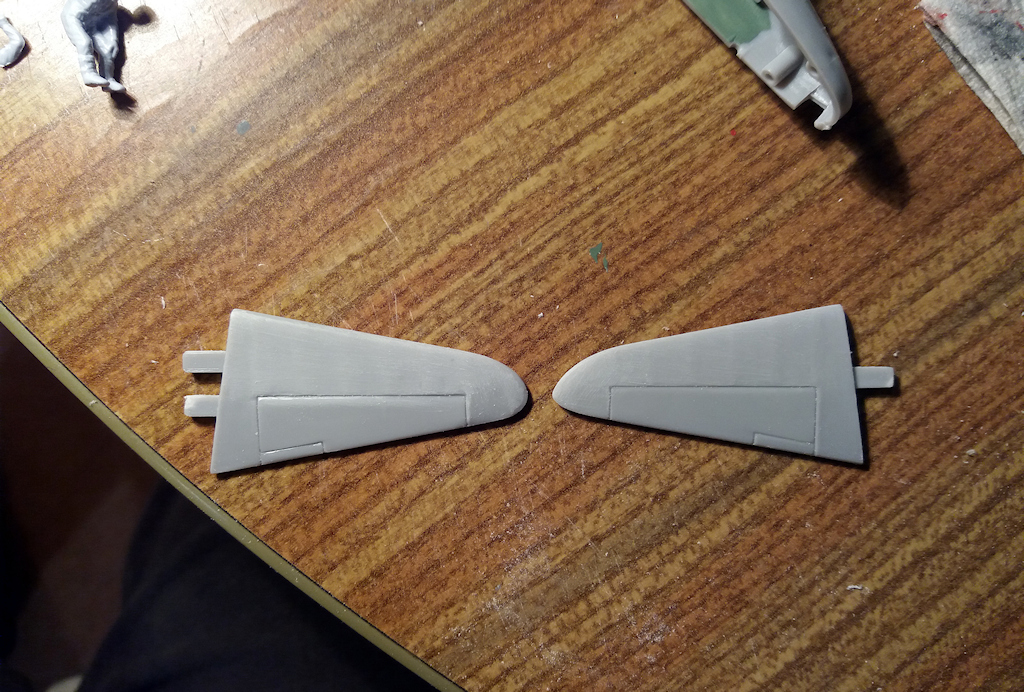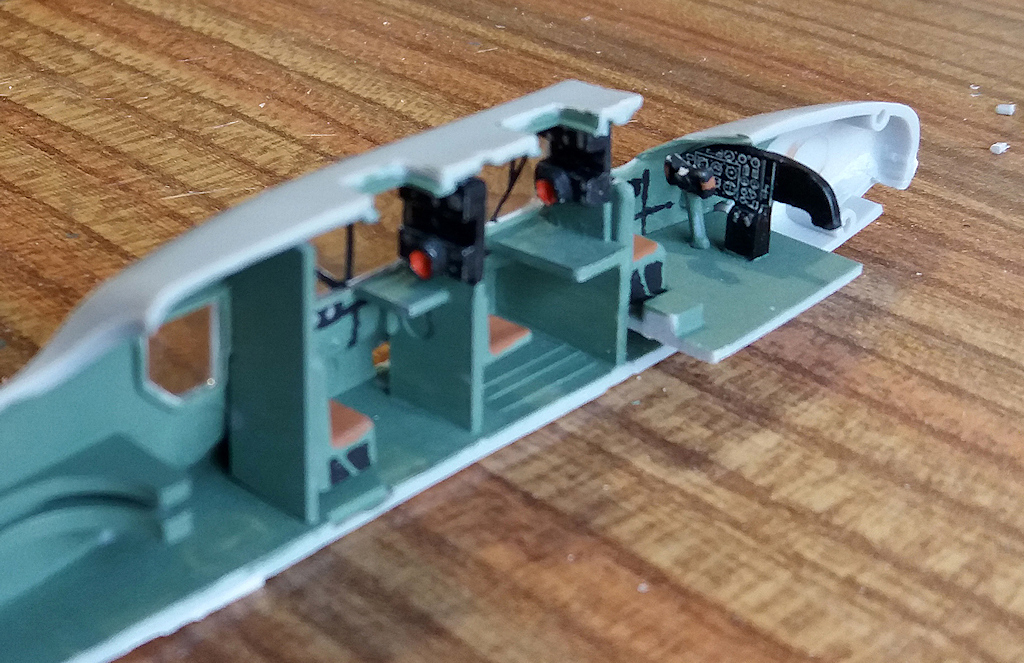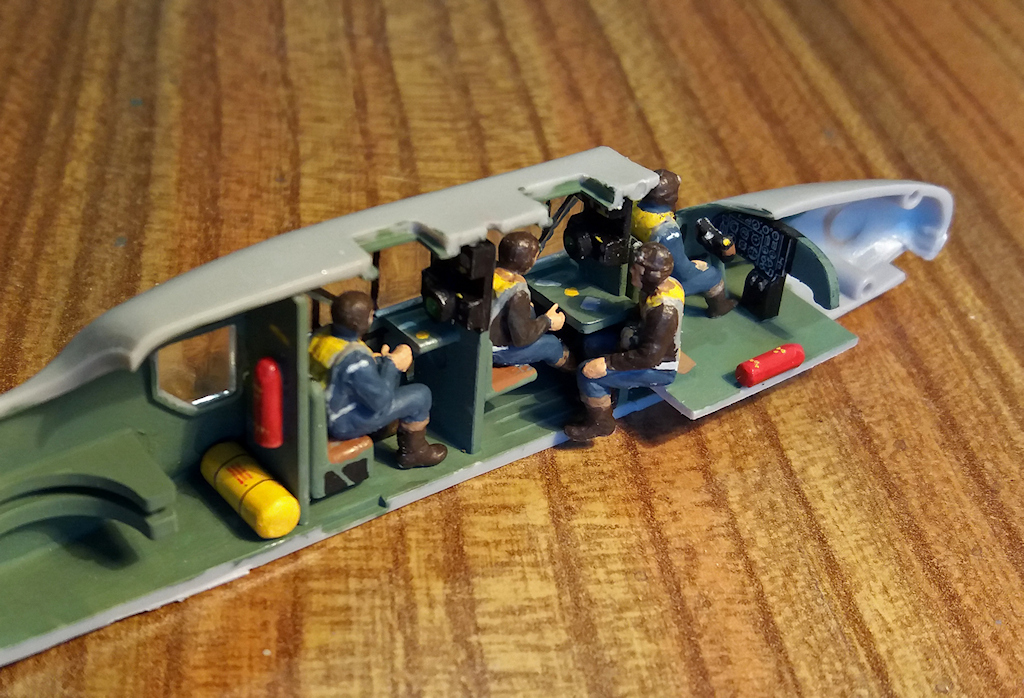Post by acklington on Nov 30, 2018 13:29:15 GMT 1
For those who may remember my previous attempt to create a Wellington Mk.XVIII (T.18) of 62 OTU at RAF Ouston, 1945, this new build is intended to produce its predecessor the Avro Anson Mk.1 (A.I.), also with 62 OTU at Ouston in Northumberland. The starting point for this new conversion is this excellent booklet;
 Anson (2) w by Philip Pain, on Flickr
Anson (2) w by Philip Pain, on Flickr
The top of the cover shows my chosen subject, complete with radar aerials. Inside the booklet is the following photo of one of these A.I. Ansons;
 Anson (3) w by Philip Pain, on Flickr
Anson (3) w by Philip Pain, on Flickr
And that is it! Unlike the Wellington T.18 where I eventually had six or seven photos to work from, here I have just one post-war photo, and a single side view illustration. The only information in written descriptions is that there were two radar trainees, plus an instructor, and that the A.I. radar installation was similar to that on early Beaufighters and Mosquito night fighters, with an arrow head aerial on the nose, and two vertical aerials near each wing tip. Absolutely no information regarding the internal layout - was there one radar position that the two trainees took turns at using? Or two radar positions, one for each trainee? Where did the Instructor sit? This all matters, because the interior of a Mk.1 Anson is very visible. Were the two clear view escape hatches on top of the fuselage retained? And the bomb-aiming clear view panel in the nose? I've also got the excellent "Anson File" book by Air Britain, but it contains no photos of the A.I. version, and no additional information.
The post-war photo (above) gives some clues, and in particular there appear to be one or two additional partitions within the fuselage. So I'm going to opt for two radar positions, unless anyone knows different? The photo also shows that apart from the A.I. aerials, there were other aerials that seem very similar to those on the Wellington T.18. The main aerial mast above the cockpit was removed. The forward sloping aerial under the nose suggests that the bomb aimer's glazed panel would become solid. The photo also appears to show, more clearly in the booklet, that NK291 had a prominent astrodome in place of the forward top fuselage escape hatch. The side view illustration doesn't show an astrodome. My guess is that these Ansons were converted from various Mk.1s, and retained features from their particular donor aircraft. I also think that 'stray daylight' from various windows didn't matter, because these were going to be Mosquito or Beaufighter crew members, and in those aircraft the A.I. operator sat in an open cockpit, with the radar screen encased in light proof rubber cover.
62 OTU had three constituent squadrons, A, B, and C, with a total complement of over 50 Ansons. Apparently 'C' squadron didn't operate the A.I. version. So how many Anson (A.I.) were actually produced? The Air Britain "Anson File" doesn't identify the A.I. aircraft, but does record those that served with 62 OTU. The Wellington T.18 production run was 80 aircraft, and each of those could carry four trainees. So there must have been more than 80 Ansons, perhaps well over 100 aircraft? It was a significant version, and they were the only Ansons to equip a Fighter Command OTU. All of the Beaufighter and Mosquito night fighter squadron radar operators were trained at RAF Ouston, and RAF Usworth (Sunderland) before 1943.
This model uses the Airfix Anson Mk.1, not the best choice but it should knock into shape. The initial work being to alter the engines to remove the cylinder helmets; add the lower intake, (fashioned from scrap sprue); and reshape the lower part of the cowlings, including adding a notch for the external exhaust pipe.
 Anson (1) w by Philip Pain, on Flickr
Anson (1) w by Philip Pain, on Flickr
 Anson (2) w by Philip Pain, on Flickr
Anson (2) w by Philip Pain, on FlickrThe top of the cover shows my chosen subject, complete with radar aerials. Inside the booklet is the following photo of one of these A.I. Ansons;
 Anson (3) w by Philip Pain, on Flickr
Anson (3) w by Philip Pain, on FlickrAnd that is it! Unlike the Wellington T.18 where I eventually had six or seven photos to work from, here I have just one post-war photo, and a single side view illustration. The only information in written descriptions is that there were two radar trainees, plus an instructor, and that the A.I. radar installation was similar to that on early Beaufighters and Mosquito night fighters, with an arrow head aerial on the nose, and two vertical aerials near each wing tip. Absolutely no information regarding the internal layout - was there one radar position that the two trainees took turns at using? Or two radar positions, one for each trainee? Where did the Instructor sit? This all matters, because the interior of a Mk.1 Anson is very visible. Were the two clear view escape hatches on top of the fuselage retained? And the bomb-aiming clear view panel in the nose? I've also got the excellent "Anson File" book by Air Britain, but it contains no photos of the A.I. version, and no additional information.
The post-war photo (above) gives some clues, and in particular there appear to be one or two additional partitions within the fuselage. So I'm going to opt for two radar positions, unless anyone knows different? The photo also shows that apart from the A.I. aerials, there were other aerials that seem very similar to those on the Wellington T.18. The main aerial mast above the cockpit was removed. The forward sloping aerial under the nose suggests that the bomb aimer's glazed panel would become solid. The photo also appears to show, more clearly in the booklet, that NK291 had a prominent astrodome in place of the forward top fuselage escape hatch. The side view illustration doesn't show an astrodome. My guess is that these Ansons were converted from various Mk.1s, and retained features from their particular donor aircraft. I also think that 'stray daylight' from various windows didn't matter, because these were going to be Mosquito or Beaufighter crew members, and in those aircraft the A.I. operator sat in an open cockpit, with the radar screen encased in light proof rubber cover.
62 OTU had three constituent squadrons, A, B, and C, with a total complement of over 50 Ansons. Apparently 'C' squadron didn't operate the A.I. version. So how many Anson (A.I.) were actually produced? The Air Britain "Anson File" doesn't identify the A.I. aircraft, but does record those that served with 62 OTU. The Wellington T.18 production run was 80 aircraft, and each of those could carry four trainees. So there must have been more than 80 Ansons, perhaps well over 100 aircraft? It was a significant version, and they were the only Ansons to equip a Fighter Command OTU. All of the Beaufighter and Mosquito night fighter squadron radar operators were trained at RAF Ouston, and RAF Usworth (Sunderland) before 1943.
This model uses the Airfix Anson Mk.1, not the best choice but it should knock into shape. The initial work being to alter the engines to remove the cylinder helmets; add the lower intake, (fashioned from scrap sprue); and reshape the lower part of the cowlings, including adding a notch for the external exhaust pipe.
 Anson (1) w by Philip Pain, on Flickr
Anson (1) w by Philip Pain, on Flickr




























